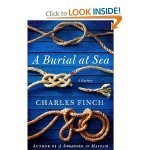Eleanor Sullivan's Blog, page 5
June 29, 2012
Tracing My Family History–One Ancestor at a Time
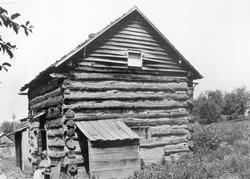
Joseph Bimeler's cabin, built 1817, Zoar, Ohio
A few days ago I was interviewed for David’s Booktalk. After hearing about my family history and its relationship to my stories, David asked if I’d put my family history on my website. I agreed. Thinking about various traits in my distant relations I’ve uncovered in historical records, I marvel at how many of my ancestor’s traits I’ve seen revealed in relatives I’ve known.
Let’s start with my 4th great grandfather, Joseph, the first to come to America.
Joseph Michael Bäumler (Americanized to Bimeler)
Born 26 May 1778 in Merklingen, Baden-Württemberg, Germany
Little is known about Joseph’s early years, but as an adult, he was considered pious and God-fearing. On 3 August 1802 he married Barbara Danzer in Ulm, Germany and, to counter his all-too-holy image, their daughter, also named Barbara, was born on 18 January 1803. (Do the math!) A year later a son, Peter, was born on 7 March 1804. Sadly, wife Barbara died 8 months later, leaving Joseph with a twenty-two month daughter and an infant son. How he managed or who might have helped him we don’t know. He worked as a weaver, though, and possibly a school teacher.
Time passed and Joseph met a group of religous people who refused to follow the state religion in Baden-Württemberg, which they considered corrupt. For their beliefs these people, called Separatists, were imprisoned, flogged, had their children adopted out, and had their property confiscated. Finally, Quakers in England, hearing of their plight, helped arrange for them to escape to America. According to historic records, Joseph’s leadership became apparent during the lengthy trip in squalid steerage on the ship.
But…Joseph left his daughter, Barbara, behind in Germany. Why? We don’t know. She was fourteen by then, old enough to have been a helpmate. Instead, he took his son, Peter, age thirteen, who from all accounts never amounted to much in America. Barbara married Georg Geissler in 3 May 1830 in Gerstten, Germany. Georg was infamously born illegitimate 10 October 1797. What made Barbara marry a man of such poor lineage? She’d not married until age 27 so was she considered unmarriageable only relieved to find a husband? We may never know. I’ve made inquiries about descendents of Barbara but so far I haven’t found any. She died 15 May 1845 at age 42.
In the meantime, Joseph and Peter settled in Zoar, Ohio, named for the place where Lot had found sanctuary after leaving Sodom much as the Separatists had found sanctuary in America. Joseph’s cabin is still standing and in use today.

Joseph Bimeler's cabin today
Joseph served as both the secular and religious leader, ruling with an iron hand, to all accounts. After seven years of celibacy (for both religious and practical reasons–they needed the women’s efforts), the Separatists built the Ohio Canal through their land and paid off their mortgage with the proceeds. Joseph decreed marriage was allowed and he promptly married his housekeeper, Dorothea. (In a strange later occurrence my grandmother married a newly-widowed man. She’d been his wife’s nurse and stayed on to keep house for him after her death.)
Joseph died 27 August 1853 in Zoar, Ohio. A dominating man to the end, he kept the title to more than 5000 acress of Separatist land in only his name until three days before his death. Maybe thought he could take it with him?
Come back next week to learn what happened to his son, Peter.
April 1, 2012
Novel Reading in America: 1800 to 1850
Plentiful today (some mightsay "too plentiful" as the proliferation of indie publications and ebooks attests), novels are an integral part of life. Kindles, Nooks, and books on tablets and phones, as well as print, offer myriad opportunities for entertainment, relaxation, and enlightenment.
But it was not always thus.
In this post and a future one, I'll trace the history of novel reading in America, linking prevailing attitudes with key historic events. Think you know what Americans thought then? You may be surprised.
In 1800, the US population was 5 million; Jefferson was elected president.
Noah Webster published The American Spelling Book, a precurser to his dictionary
In 1825 construction on the Erie Canal began. Why do I care about this? My life depended on it! See how.
"On Novel Reading" is published in 1820, exhorting children and adults alike to avoid reading novels! "The stimulation of novels, he writes, used to attract at first, must be not only continued, but heightened to keep up the attraction." One young woman committed suicide, "occasioned by extreme sensibility, and romantic ideas, created by novel reading."
Andrew Jackson becomes president in 1829.
Louisa May Alcott is born in 1829.
(Cover Her Body is set in 1833)
By 1835 "Devouring Books" decries the "mental gluttony" that leads to over-reading, which has dismal effects on the reader is published. No wonder Alcott had some many challenges to being published. None of us writing today should complain!
Also in 1835 Samuel Clemens (Mark Twain) was born.
"Reading is Not Thinking" (May 26, 1837) exhorts people to read for understanding instead of for entertainment.
The underground railroad is established in 1838.
"Vicious Novels: The Cause of Their Increase" (1845), by F. C. W., printed in The Mother's Magazine, blames human desire for entertainment for "vicious" novels.
Charles Dickens outrages Americans in 1842 when he writes about his travels in the US.
In 1844 the first telegraph is sent by Samuel Morse, presumedly not to extoll the virtues of reading novels.
"What Books Shall I Read?" (1845), argues that "impure" books should be avoided, so good principles won't be "loosened".
The US population tops 23 million in 1850; Zachary Taylor is president.
There you have it–the forces that gathered in the first half of the 19th century to discourage novel reading. Every novel writer knows this. We've all had people glance at our book or ask what we write and turn up their noses. "I never read fiction," they say proudly.
To which I respond: "I'm so sorry." Nothing but sympathy for such a misguided soul!
Wondering how novels fared in the second half of the century? Come back in a few weeks for the answer. Can't wait? Peruse Timeline of 19th Century America.
March 18, 2012
Crime and Punishment in the 19th Century
Warning: The following is for mature audiences only
Murder, burglary, theft. You think they're all a product of recent history. Think again. Violent altercations occurred often in the hurly, burly world of early American life. Soon laws were enacted, courts established,  and a justice system (of sorts) grew up to right the wrongs and mete out punishments.
and a justice system (of sorts) grew up to right the wrongs and mete out punishments.
Penalties were designed to punish the wrong doer and to discourage others from committing crimes. Flogging was a favorite. The perpetrator would be stripped to the waist (men and women both), their hands tied over their heads, and the punishment administered. What merited this merciless punishment? Robbery (even one so minor as filching an apple from an overhanging branch), adultery (especially married women who had physicial concourse with a man not her husband even if he raped her). Hanging was another favorite. And a community spectacle, allowing the citizenry to witness the result of wrongdoing and discouraging future capital transgressions, presumedly.
So, what were the crimes so onerous that they merited severe punishments? Let me count the ways!
We call unintentional killings manslaughter today and punishments are more lenient than for murder convictions. However, 19th century juries were more tolerant of accidental killings-as in a sudden quarrel or even in the commission of an unlawful act. According to the Statutes of Ohio in 1833, the penalty for killing without malice aforethought was not to exceed $1000 and imprisonment not to exceed 2 years. Willful murder merited death by hanging.
In addition, if a man shall "carnally know any woman, with force and against her consent" or "carnally know any woman child under the age of ten years" and convicted of such crime, the penalty was death. (I'm glad to see our forebearers desired to protect our distant sisters, however much it was to protect the blood heritage of their descendents!)
If, however, a man only attempted a rape, he would be "whipped not exceeding thirty-nine stripes on his naked back." (Statutes of Ohio, 1833). Forgery and counterfeiting warranted the same punishment.
An arson that caused a death merited a likewise punishment: death. An eye for an eye, anyone?
Punishments of various other crimes are spelled out in the statutes.
Fifty stripes on a naked back were ordered for:
Cutting out a tongue
Putting out an eye
Cutting off an arm or leg or rendering them useless
Severing or destroying a man's "privy member"
Why weren't more convicted people sent to prison, you ask? Because they were few and far between. Local jails primarily housed prisoners pending their trials. Few facilities to house prisoners long term existed until later in the 19th century. Justice was to be administered swiftly and severely.
Prisoners' rights? They never heard of them. Corporal punishment, deterrence, and retribution characterized 19th century justice. The good of society and morality governed court decisions.
I wonder…have we changed all that much today?
March 4, 2012
Hiding in the Branches
This week I invited inveterate ancestry devotee Mary Dolan to share her experience digging out her ancestor's secrets. 
Genealogy is mainstream. The British series Who Do You Think You Are and its American counterpart and Henry Louis Gates' African American Lives and Faces of America entertain us with celebrities discovering their often humble and always surprising roots. I've enjoyed these shows, but I am more entertained by what I've discovered hiding in the branches of my own family tree.
My documented family history begins in the mid 1800s when my eight great grandparents were swept across the Atlantic in the tsunami of Irish fleeing the Great Famine. Eventually they all landed on the shores of Iowa.
Great-grandfather John Duffy and great-grandmother Margaret McLaughlin married in 1864 and produced my maternal grandmother Ellen who produced my mother Mary Ellen who produced me. Here's some of what I've discovered while researching this family.
From my mother, I knew two facts about John Duffy–he lived to his mid 90s and he taught himself to read and write after he arrived in America. What I discovered: John Duffy was 20 years old when he immigrated with his parents, Patrick and Alice, his eleven brothers, and three sisters. The twelve brothers with their Biblical names were referred to as The Twelve Apostles in their community. The father Patrick and sons homesteaded (each farmed 160 acre parcels). The road that bordered their adjacent farms is named Duffy Road.
All I knew from my mother about Margaret was her name-Margaret McLaughlin. What I discovered: Margaret immigrated alone. Margaret 's obituary says she arrived in Boston as a 16 year old and remained in Boston for 5 years. She was likely an indentured servant working off her passage. After the five years of servitude were completed, she traveled to Iowa where she had a married sister.
My grandmother talked about her five sisters and two brothers. What I discovered: My grandmother had seven sisters, but two were killed in a horrific fire that also disfigured Margaret's face. Here is a description from the May 1, 1884 Iowa Bulletin Journal, Independence, Iowa:
"A heart-rending calamity occurred Friday night of last week for the family of John Duffy…Every member of the family was badly burned and will bear to their graves the marks of the experience of that terrible night. But Mrs. Duffy and a six-year-old child whom she carried out in her arms are very seriously hurt…Their faces are so disfigured as to be unrecognizable, and the burns on other portions of their bodies are deep and serious."
In another article, the reporter describes how 12-year-old Lizzie turned back for baby Burt, not knowing that her father had already carried Burt to safety. When the second floor collapsed, Lizzie tumbled to a fiery death. Rose, the six-year-old in her mother's arms, died a few weeks later.
John Duffy sired 10 children and lived to his mid 90s. What I discovered: One sister, Bridget, and John's eleven brothers also lived long lives and had large families. In 1914 their family reunion was newsworthy.
Largest Family Yet On Record.An interesting compilation of figures, estimating the number of Duffy relatives was made at the large Duffy reunion held at the old homestead five miles north of Fairbank, Sunday, and the list probably exceeds that of any other family in this part of the country. The father of the family was Patrick Duffy, who died 25 years ago, leaving twelve sons and one daughter. Since that time there have been no deaths in the family's ranks and the aggregate number of offspring reported by the thirteen is 168. The grandchildren are about 200, hence there were over 300 in attendance at the gathering last Sunday. [ Waterloo [Iowa] Evening Courier and Reporter, August 20, 1914
A happy spinoff of this research has been connecting to a number of living relatives, all of us descendents of the 168 offspring mentioned in the article. In addition to genealogy, we've shared pictures and family stories.
So go ahead–find those ancestors hiding in the branches of your family tree. You'll be glad you did.
February 19, 2012
Tracing Your Ancestry
Ever wonder why great aunt Sylvia never married? Or why your mother and grandmother always whispered when talking about your long-deceased grandfather? You may be surprised (or maybe not) to learn how much one generation affects the next. And the next. And so on. One way to find out the family secrets is to trace your ancestry.
Why would you care about long-dead people, even if they were your relatives?
Because the past informs the present. Your characteristics, your family's educational background, your family's income, where you grew up, how you lived all stem from those long-ago relatives and what they did.
You don't agree? Okay, let's start with where you live. Let's say you grew up in a big city, Chicago, for example. How did your parents get there? Job transfer? Or did one of them grow up in the Windy City? Let's say your mother grew up in Chicago, met your father in college and they settled there. You visit your grandparents frequently as well as aunts, uncles, and cousins. Now how did your grandparents get there? Let's jump back in time and say that your great, great grandparents emigrated from Ireland in the early 20th century. What did they bring from Ireland that you still experience today? Drinking? Catholic religion? A recipe for Irish stew? A raucous St. Paddy's day celebration? See, your ancestor's affect your life today even if you didn't realize it.
Okay, you're convinced, but you don't know that much about your ancestors. Your surname sounds English so maybe your ancestors came from the UK. One little-known fact about the heritage of the majority of Americans is that more are descended from Germans than any other country. The two world wars, however, encouraged those with German names to Anglicize them to avoid discrimination (remind you of any people being ostracized today because of the nationality?). What's more, you're descended from more and more people the farther you go back so you likely have a blend of nationalities in your background.
Aren't getting a bit curious now about where you came from?
Luckily, help's at hand.
The first thing to do is to interview living members of past generations of your family. Sylvia Nash writes an interesting blog titled, "Past and Present: Writing Mysteries Suspended in Time." Her post on January 2 recommended interviewing your living ancestors, something most people don't think of until it's too late. Nash lists some basic questions to ask and adds links to how to interview.
To go beyond those still living, consider joining Ancestry.com. Once you join, you may find other family members interested in participating and adding information, too. They can use your subscription as long as you give them the ID and password. Only one person, however, can be on the site at one time.
Starting with the names, birth and death dates, city, state, and country of those ancestors you know or as much as you know about them, Ancestry allows you to search birth, marriage and death records, census and voter lists, military records, immigration records, such as ship manifests, in this country and worldwide if you choose that subscription. But the most helpful feature is the ability to post on message boards and connect with other people searching the same ancestors.
What a surprise it is to learn that your father's great grandfather was a coal miner in Virginia or that a distant grandmother emigrated from Poland. Or that these early settlers farmed in Iowa.
I learned so much about my ancestors that I'm writing mystery fiction using my distant grandfather, Joseph Bimeler, who led a beleaguered band of religious dissedents out of Germany and founded a town in Ohio as a character in the stories. That led me to visit the town, Zoar, that still stands full of museums and reenactors who bring the past to life for visitors.
See, you might embark on a whole new career if you traced your ancestry. I can promise you, though, you'll find an entrancing journey along the way.
Mary Dolan explores her ancestry in next week's blog, discovering untold family secrets!
February 5, 2012
Midwifery in the 19th Century
In bygone days, few women delivered babies in hospitals. In fact, there were few hospitals and they were far from the isolated farms and towns in 19th century rural America. So, how did mothers and infants survive?
Midwives were the answer. Local women, usually with children of their own, learned midwifery as apprentices, as did many 19th century physicians. Observing and helping with deliveries honed their skills and exposed them to the variety of problems they'd face when working on their own. To be a midwife required help at home. The midwife could be called away suddenly–often in the middle of the night–and could be gone a day or more if the labor lasted long. For their work, midwives might receive modest compensation, however, they might be paid with a chicken, household goods, or lumber. 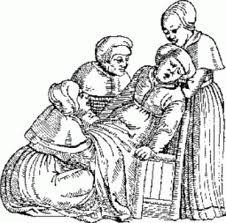
But it wasn't easy to be a midwife. Midwives dealt with births that could go horribly wrong and seldom progressed easily or rapidly. Experiended midwives might administer ergot fungi or make the woman walk about to speed an intransigent birth along. Needless to say, complications, easily handled today, often spelled death for the mother and, possibly the infant.
An unmarried mother? No problem. The midwife served as her confessor. If, in the throes of labor, the woman screamed out the father's name, he was forced to marry her. It was believed that at that moment of pain, the woman would most certainly be telling the truth. Many reluctant men were brought to the altar a few days hence.
Martha Ballard, who served as a midwive for more than 30 years and whose practice spanned both the end of the 18th century and well into the 19th, kept a diary, invaluable to us today. Historian Laurel Thatcher Uhrich brought Martha's diary to life in her book, The Midwife's Tale. In it, she puts Martha's scribblings into context of the place and time, early New England. Martha recorded her work at home, tending her garden, spinning, knitting, cleaning, and the inevitable constant sewing. Then she'd be called away, worrying all the while that her work lay fallow at home. Nonetheless, she tended to her mothers with care and proudly wrote that, although she'd lost infants over the years, she'd never lost a mother.
High praise during a time when physicians, using forceps, bleeding, and opium. Martha reports seeing an infant born with all its limbs dislocated after a doctor used forceps. Bleeding weakened the mother so that she had little strength to participate in the delivery, and opium slowed contractions, lengthening the labor.
Doctors suffered another hazard in the early years. Too bashful to allow men to see their bodies, even in the midst of labor, women might force male physicians to deliver their infants by reaching under her skirts!
Also doctors might lose a mother to childbed fever. What they didn't know because the germ theory had yet to be discovered, was that they'd inadvertantly contaminated the woman's body by failing to wash their hands after leaving another patient's bedside. Infection inevitably followed. Apparently Martha washed her hands as a matter of course.
We owe our lives to midwives of the past. Without them, we wouldn't be here!
January 22, 2012
101 Ways to Poison Your Enemies
Ever wish you could kill someone? I think we all have but few of us act on the desire.
Now, put yourself in the 19th century. If you wanted to kill someone then, you could of course use a knife, hachet, shotgun, or rope, among other violent ways. But all of these methods would tell murder and could spell disaster for you. Poisons, on the other hand, could be concealed. Sadly, no ready-made cartons of ant poison could be found on Walmart shelves then nor would you find a convenient supply of sleeping medication at your local pharmacy. You could, though, find plenty of plants to do the job.
What are they, you ask? Lots.
DISCLAIMER: This information is intended for writers and other curious folks. No endorsement nor encouragement to actually poison anyone is intended nor advised.
I spoke to the "poison lady," Luci Zahray, who clued me in (sorry, pun intended) on the many plants that could put an end to your problems with a troublesome enemy, friend, or relative.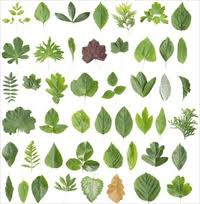
Here's a partial list:
Lily of the Valley–this inocuous, spring-smelling flower is deceptive. Just soak the leaves in water for awhile, serve the water to an unsuspecting guest and voila, stomach pain, nausea, vomiting and hallucinations immediately start the inevitable death from heart failure.
Oleander–An ornamental shrub and house plant hides powerful cardiac glycosides that cause death much like an overdose of digitalis does, that is, promptly
Privet–yes, the hedge. The entire plant is poisonous but the berries contain the highest concentration of ligustrin, a fast-acting poison. If you've ever developed a skin rash after trimming this hedge, you experienced mild privet poisoning.
Pokeweed–a funny-sounding shrub that can cause severe stomach cramps ensue after eating only a few of its berries and lead to a violent death.
Thornapple–also known as jimson weed that can cause delirium, incoherence, coma, and death.
Deadly Nightshade–also known as belladonna. Dried leaves steeped in tea can paralyze a subject albeit death comes slowly.
So I lied about 101 ways. There are many more poisonous plants plus minerals, such as arsenic, that can kill. Nineteenth century poisoners were constrained by the availability of plants accessible to them, but I have no doubt that many a death went unrecorded as a homicide in those bygone days. I'll be back in a month with more choices for you.
For any would-be poisoners, please be informed that today chemical analysis can uncover almost any deathly substance. In addition, any suspicious death is bound to be investigated. So, I'll leave you with this thought: only poison your enemies in fiction. That's what I do.
December 18, 2011
Old-Time German Christmas Treats
Want a taste of old-time Christmas treats? Try these two that were made in the 19th century German village of Zoar, Ohio, where, by the way, my story is set!
Ginger cookies
Ginger Christmas Cookies (Ingwer Kuchelchen)1 lb. soft brown sugar
1 lb. butter
1 qt. molasses
1 3/4 lbs. flour (more if needed)
1 1/2 tablespoons ginger
2 tablespoons cinnamon
1/2 teaspoon cloves
2 teaspoons baking soda
1/4 cup warm water
1 cup milk
Cream together sugar and butter, stir in molasses. Add flour and spices. Lastly add soda dissolved in warm water. Chill overnight. Roll out as thin as possible. Cut with cookie cutter into shapes. Place on cookie sheet and brush with milk. Bake at 300 degrees until done. (I know, what's "until done?" Good German bakers knew when!)
These cookies were made at Christmas in Zoar and were a special treat for the children.
Here's another Christmas treat made in Zoar:
Peppernuts (Pfeffernusse)
Peppernuts
2 cups molasses1 pound brown sugar
3 cups white sugar
2 cups melted butter
1 teaspoon allspice
1 teaspoon cardamom seed
1 tablespoon cinnamon
3 teaspoons baking soda dissolved in 2 cups buttermilk
1 teaspoon cream of tartar
1/2 teaspoon salt
1 heaping teaspoon black pepper
1/4 poind finely chopped citron
1 box small raisins finely chopped
1 cup nuts finely chopped
1 teaspoon ginger
Add flour enough to handle well. Roll into balls size of hickory nut. Bake at 350 degrees until done (that again!). Keep in covered crock for a week or more to ripen.
In the interest of full disclosure, I have not tried either of these recipes. If you do make them, be sure to let me know how they turned out.
In the meantime, good holiday eating!
December 11, 2011
Childbirth in Bygone Eras
Ever wonder how all of us got here? Not a philosophical question. No, I mean what did our fore-mothers endure so that ultimately we came along?
To answer this question, I've asked D. P. Lyle, MD and mystery writer, to tell us what he's learned about childbirth in the past.
In the 1600s there were no hospitals and doctors knew very little. How little? It wasn't until 1628 that Sir William Harvey (1578-1657) published "De Motu Cordis," his famous treatise, outlining his discovery that the blood actually circulated through the body. Prior to this, physicians lived under the erroneous assumptions espoused by Aristotle, Galen (approx AD 130-201), and Andres Vesalius (1514-1564). The Germ Theory of infectious diseases wasn't even a flicker in the minds of scientists. It wasn't until 1870 that Louis Pasteur and Robert Koch developed this concept. Vaccination as a means of preventing disease was over a century away: Smallpox (Edward Jenner, 1796), Anthrax and Rabies (Pasteur, 1881 and 1882, respectively), Tetanus and Diptheria (Emil von Behring, 1890), and Polio (Jonas Salk, 1952). Antibiotics such as penicillin (Alexander Flemming, 1928) did not exist and surgical anesthesia (Crawford Long, 1842) wasn't around.
Needless to say, childbirth in the 17th Century was a risky proposition. Mothers often died as did the infant. Most commonly from bleeding and infection, since methods to control bleeding were crude and treatment of infections was non-existent. The problems of breech or other abnormal births led to death more often than not.
At that time, few doctors existed, especially in America, and the population was predominately rural. Most people lived on farms or in very small communities and the large majority of these areas did not have a doctor for miles if at all.
Though trained midwives were common in Europe, there were few if any in America during Puritan times. Thus, deliveries were often performed by a member of the community. Perhaps one of the older women, who became a de facto midwife. She would likely travel by horseback or on foot from farm to farm and attend the births.
The deliveries would take place in the home, usually in the bedroom. If the home was a single room cabin, family and friends would wait outside until the ordeal was over. Hot water, freshly washed cloths, bare hands, and a healthy dose of fear and anxiety were the only available tools. An understanding of post-partum infections (called Puerperal Sepsis) wouldn't be delineated until Ignaz Simmelweis developed sterile delivery techniques in 1847. If severe bleeding or infection occurred, prayer and comfort were the only salves. And if the infant entered the birth canal in an abnormal fashion, such as a breech (butt first) or footling (foot first) presentation, death of the mother and the infant was likely. Obstetric anesthesia and analgesia consisted of a piece of wood or leather the mother could bite down on. Perhaps in some communities alcohol or tincture of opium would be available. Interestingly, both alcohol and opiates tend to diminish uterine contractions with the net effect of prolonging the mother's ordeal.
The husband would not likely be present during the delivery. That is a more modern invention. The 1600s were very puritanical. Even a physician wasn't often allowed to undress a female patient for his examination. If he needed to listen to the patient's heart or lungs, he would place his ear against the patient's chest. With a female patient, this was rarely allowed. Thus, Rene Laennec invented the stethoscope (1816) to circumvent this problem.
All in all, childbirth was a dangerous, bloody, and noisy affair. Also immensely rewarding, since the very survival of the community depended upon it.
Connect with Dr. Lyle on his website: http://www.dplylemd.com/ and check out his blog for more forensic info: http://writersforensicsblog.wordpress.com/
December 5, 2011
5 Favorite Historical Mystery Writers
Whenever I speak at author events inevitably the same question emerges: Who are my favorite mystery writers? Now that I'm fully immersed in writing a historical mystery series, I find I'm reading more and more historical mysteries. I try to glean what it is I love about them and hope to improve my own work. One caveat about my selections: I don't like extreme violence on the page but I do like both interior struggles and external action. So, here goes!
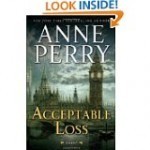 Anne Perry is my all time favorite historical mystery writer. She writes two series, the latest book featuring William Monk, a 19th century investigator in England, and Hesterly Latterly, a nurse. Both characters struggle with personal demons to do the right thing. Her other series features a police officer and his wife. All of her books explore the depth of human decency as well as depravity and complex plots keep me compelled to keep reading. She's also written Christmas mysteries using these characters as well as a WWI series. I highly recommend them all.
Anne Perry is my all time favorite historical mystery writer. She writes two series, the latest book featuring William Monk, a 19th century investigator in England, and Hesterly Latterly, a nurse. Both characters struggle with personal demons to do the right thing. Her other series features a police officer and his wife. All of her books explore the depth of human decency as well as depravity and complex plots keep me compelled to keep reading. She's also written Christmas mysteries using these characters as well as a WWI series. I highly recommend them all.
Another favorite writer is Charles Todd, actually written by mother and son team. I only recommend their Bess Crawford series. The character is a WWI nurse who struggles with the overwhelming injuries she sees, the futility of war, and solving mysteries as well, all without being too good to be true. Her faults, though minor, ground her in the real world that readers can imagine.
Charles Finch is a newer author whose books take place in 19th century England. His very likable characters are Charles Lenox and Lady Jane. The latest is A Burial at Sea.
Jacqueline Winspear is another favorite. Maisie Dobbs is a former WWI nurse (are you sensing a theme here?) turned private investigator in post-war England. Her next book releases in March 2012.
My list of favorite historical mystery writers would be incomplete without my mentioning Priscilla Royal. Her English medieval series features prioress Eleanor (how could I not like this?) and Brother Thomas. It matters not that the characters lived in the middle ages. Their foibles afflict us all but, unlike most of us, their courage and fortitude inspire us. I interviewed Priscilla on an earlier blog if you want to know more about her and how she writes her intriguing mysteries. Her eighth mystery, A Killing Season, was out this fall.
So there you have it–5 of my favorites. I'll be back with more in a few weeks. In the meantime, let me know your favorites. Comment for all to see!





